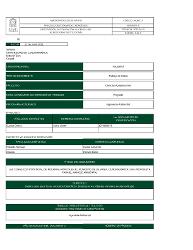| dc.description.abstract | Las zonas con potencial de recarga hídrica (ZPRH) son de suma importancia puesto que abastecen las fuentes de agua, por consiguiente, a las poblaciones y a los ecosistemas, este recurso es fundamental para la existencia de la vida en el planeta. La recarga hídrica depende de la precipitación, de la permeabilidad de los suelos, de la escorrentía superficial, del contenido de humedad, del patrón de drenaje de la cuenca y de la pendiente de la superficie (Silva, 2007). Debido a la fragmentación y desarticulación de la información que se presenta en el municipio Silvania, se hace necesario aplicar una metodología para conocer las ZPRH (zonas con potencial de recarga hídrica), en este caso se utilizará la “Guía para la identificación participativa de zonas con potencial de recarga hídrica” (Matus, Faustino & Jiménez, 2009), la cual contiene como primera medida la evaluación y definición de la zona de estudio, seguido de esto la identificación de las fuentes de agua y evaluación de elementos como pendiente, tipo de suelo, tipo de roca, cobertura vegetal y uso del suelo, para realizar un mapa de estas áreas con la ayuda de herramientas SIG y a su vez la caracterización de las mismas, con el fin proponer estrategias y acciones de manejo de las mismas, para evitar la desprotección de la zona y a largo plazo el déficit hídrico, además, el desabastecimiento del recurso hídrico de la población.
Abstract:
The Water Recharge Potential Zones (WRPZ) are of utmost importance since they supply water sources, and these therefore, to populations and ecosystems. This resource is essential for the existence of life on the planet. Water recharge depends on precipitation, soil permeability, surface runoff, moisture content, basin drainage pattern, and surface slope (Silva, 2007). Due to the fragmentation and disarticulation of the information that is presented in the Silvania municipality, it is necessary to apply a methodology to know the WRPZ (areas with potential for water recharge), in this case the “Guide for the participatory identification of areas with potential for water recharge ”(Mateus, Faustino & Jiménez, 2009), which contains mainly the evaluation and definition of the study area, followed by the identification of water sources and evaluation of elements such as slope, type of soil, type of rock, vegetation cover and land use, to make a map of these areas with the help of GIS tools and in turn characterize them. The main objective is to propose strategies and actions for the areas’ management, to avoid the lack of protection of the area and in the long term the water deficit, in addition, the shortage of the water resource of the population. The expected results during the development of the different activities proposed in this project are aimed at gathering information related to the availability of water resources in the region through the implementation of the aforementioned tools. This information is intended to be in the public and governmental domain and consolidated as a support for the different authorities in the planning of the development plan of the region, and in this way an efficient management and administration of the water resource in said region can be generated. | es_CO |


